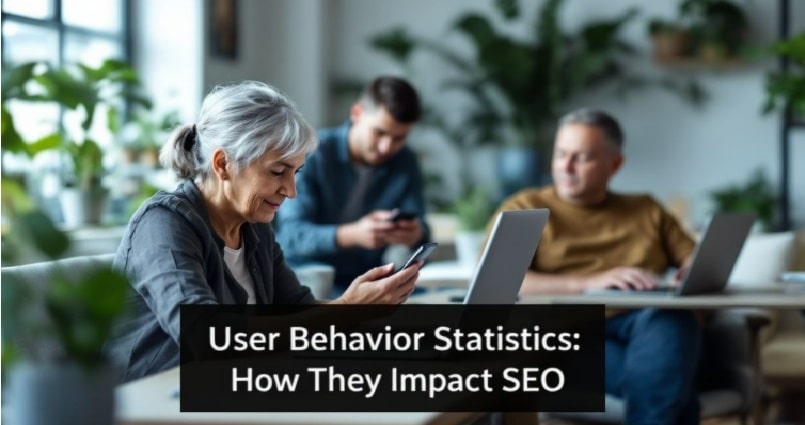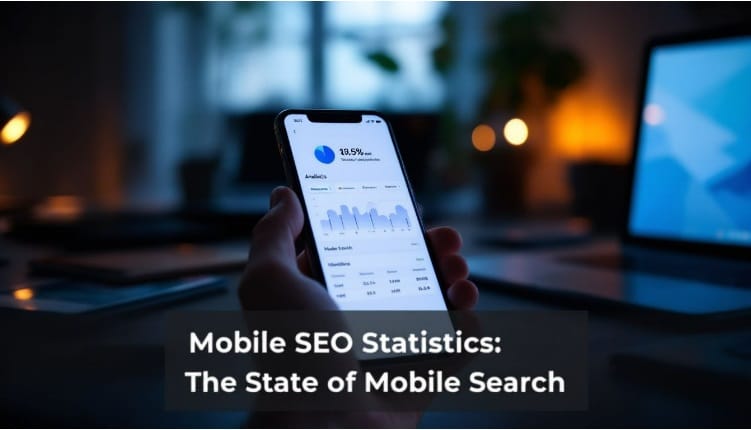Struggling to climb the search engine rankings? Here’s a fact: an efficient local SEO audit can set you on the right path. This article offers a checklist that promises to boost your position in Google search results.
Get ready; it’s time to rise!
Key Takeaways
- A local SEO audit is like a health check for your website, so it can talk to search engines and users better. By fixing the issues found in an audit like securing the site with HTTPS and improving page speed, you can rank higher in Google.
- Using Google Analytics is key to understanding how visitors behave on your site. This data will help you make informed decisions on what content keeps visitors engaged and which pages need work.
- Evaluating mobile responsiveness is important since most people use their phones to browse the internet. If your site loads fast and looks good on smaller screens you’ll get more sales and higher rankings.
- Checking for broken links and duplicate content will keep users happy by making sure they can find what they’re looking for without hitting dead ends or repeated info.
- Competitor analysis will give you insight into what’s working in your industry. By learning from their successes and failures you can adjust your SEO strategy to beat them in search results.
Download Our Free SEO Guide Here!
Importance of a Local SEO Audit
A local SEO audit is like a health check for your website. It looks at how well your site talks to search engines and users. Think of Google as a librarian and your site as one of the books.
If the librarian can’t understand what your book is about or finds pages missing, it’s not going to recommend it to people looking for information. An audit checks that everything on your site is in order, making sure Google understands who you are, what you do, and where you’re located.
This process helps find any issues that might stop search engines from showing your site in results. For example, if your site isn’t secure (HTTPS), Google might think twice before showing it to its users since insecure sites pose risks.
During an audit, tools like Google Analytics and SEMrush come into play. They help see where traffic comes from and how visitors behave on your site—essential insights for any digital marketing effort aiming for the top spots in search engine results pages (SERPs).
From personal experience, running audits regularly has been key in keeping up with competitors by identifying new opportunities for improvement before they can get ahead.

15-Step Local SEO Audit Checklist
Our 15-Step Local SEO Audit Checklist is like a treasure map for your website. Follow it closely, and you’ll uncover the secrets to getting your site to rank higher on Google.
Google Analytics Tracking
Make sure your website is correctly hooked up to Google Analytics. This tool tracks who visits your site, where they come from, and how long they stay. It’s like having a spy that tells you exactly what’s happening on your site so you can make it better for visitors.
You need this intel to boost those local rankings and get more eyeballs on your pages.
Using Google Analytics helps you understand the bounce rate, which pages keep people interested, and which ones might need a makeover. It’s crucial for figuring out if people in your local area find what they’re looking for on your site or if they bail quickly.
By tracking these actions with tools like Google Search Console and rank tracking software, you’re one step closer to turning clicks into customers.
Robots.txt Configuration
Checking the robots.txt file on your website is like setting up a welcome sign for search engines. This small but mighty file tells Googlebot what parts of your site to look at and which ones to skip.
It’s crucial for keeping your closet clean on the web – meaning, you only show search engines the stuff you’re proud of and hide the rest. I learned this firsthand when fixing my own site’s robots.txt.
Before tweaking it, some pages weren’t showing up in searches because they were accidentally blocked.
Getting it right means using tools like Screaming Frog or Google Search Console. These tools help spot mistakes in your robots.txt configuration. For example, you might have blocked access to images that could appear in Google’s image search or overlooked how directives impact page visibility online.
By guiding Googlebot correctly through your website with an optimized robots.txt file, you’re laying down a red carpet for search engines to index your best content and ignore duplicates or admin pages that don’t need public eyes on them.
Keyword and SERP Analysis
Dive deep into keyword and SERP analysis to give your local business the edge it needs. Start by finding the right words that locals use when they look for services you offer. Use tools like Google Pagespeed Insights or HubSpot for clues on what’s trending in your area.
Then, compare these keywords with your website content. Are you using words that match? This step is crucial because it connects you directly to your target audience.
Next, analyze where you stand in the Google rankings for these local keywords. It’s not just about being visible; it’s about being noticeable to potential customers who are ready to visit or call.
Check out competitors too—what keywords are they ranking for? Maybe there’s a niche they’ve missed that you can capture. Don’t forget backlinks!
More quality backlinks mean higher trust from search engines, pushing you up in those SERPs (Search Engine Results Pages). Keep everything simple and straightforward – this is how we catch organic traffic and keep them interested.
Branded Keywords Optimization
Optimizing your site for branded keywords makes it stand out in the crowded online marketplace. Make sure your titles and meta descriptions shine with these keywords. This small step can boost your visibility big time.
Think of it like putting a signboard on a busy street; you want everyone to see your name loud and clear.
Adding branded keywords to your content is not just about getting noticed; it’s about claiming your space on the internet. Every mention of your brand across social media platforms and landing pages acts like a beacon, guiding customers right to your doorstep.
By weaving these essential words into the fabric of your online presence, you’re building a web that catches more traffic, engagement, and trust from potential clients looking exactly for what you offer.
Page Speed Evaluation
Page speed does more than just accelerate your website; it plays a critical role in user satisfaction and SEO ranking improvement. When pages are sluggish, users may leave faster than one can even mention “Google PageSpeed Insights.” This helpful tool is there to identify what might be hindering your website’s performance.
By reducing loading times, you not only enhance the user experience (UX) but also upgrade your position in search results. It’s comparable to servicing a vehicle; each second you save brings you closer to the top spot.
Quicker websites foster satisfied users.
Every shrewd website owner should consider Core Web Vitals as a health check for their digital presence. These analytics provide insights on loading efficiency, interaction, and visual stability.
Boosting these parameters implies that users on Google Chrome will likely stay longer and interact more with your content or merchandise. Thus, grab your Google Lighthouse report and begin focusing on speed optimization right now.
It’s an assured strategy to outperform competitors in the digital space.
Mobile Responsiveness Check
Mobile responsiveness is a big deal. Why? Because 61% of people are more likely to buy from sites that look good on their phones. Think about it; when was the last time you waited patiently for a slow, clunky website to load on your phone? That’s right, never.
So, checking if your site plays nice with mobile devices is crucial. This means making sure texts are easy to read without zooming in, links are easy enough to click with a finger, and pages load quickly.
Now let’s get technical but keep it simple. Tools like Google’s Mobile-Friendly Test can show how well your site works on mobiles. It checks things like text size and how close together clickable things are.
If your site fails this test, search engine optimization (SEO) gets harder because search engines prefer recommending websites that work well on phones too. Plus, with secure sockets layer (SSL) certificates in the mix for better security and trustworthiness online—a must-have—having a responsive design isn’t just nice; it’s necessary.
HTTPS/SSL Encryption Check
Verifying your site’s HTTPS/SSL encryption is akin to securing your home’s front door. It’s essential for deterring malicious actors and making sure Google views you as a safe destination.
Google favors secure sites, so keep your SSL certificate current. This action goes beyond simply avoiding the “Not Secure” label in browsers; it involves safeguarding data and establishing confidence with site visitors.
A story to illustrate this point: I once assisted a friend in transitioning their website from HTTP to HTTPS. We renewed their SSL certificate, analogous to giving their website a protective shield.
Following the update, the site started to display as secured with the small padlock icon, and we also saw an improvement in its position on Google SERPs (Search Engine Results Pages).
This scenario underscores the importance of security features for search visibility and user assurance.
Indexed Pages Verification
Checking if Google knows about all your web pages is a bit like taking roll call in class. You need to make sure everyone’s present and accounted for, including your site’s pages.
The Google Search Console gives us a report card on this, showing which of our website friends showed up to the big Google party (aka indexed) and which ones missed the bus. Without this step, it’s like throwing a rockin’ party but forgetting to send out half the invites.
I found out how crucial this was when I almost missed several key pages from being listed in Google’s massive library. It felt like searching for my keys only to find them chilling in the fridge—unexpected but solvable.
To get every page invited, first make sure they’re not hiding behind a “noindex” tag or trapped by complex redirect chains or sitemap issues. Think of it as making your site more approachable at social gatherings; you want every page to shine and attract visitors.
Security Features Review
Checking your website’s security features is like locking your car in a busy parking lot—it’s a must. Websites need HTTPS or SSL certificates to keep information safe. This isn’t just about protecting data; it’s also about trust and SEO rankings.
Google gives secure sites a thumbs up, which can boost your spot in search results.
A secure site is a trusted site.
Don’t forget to scan for phishing threats and ensure all software is up-to-date. Hackers love finding holes in old software versions. It’s like leaving your front door open with a sign saying “Come on in.” Keep those updates coming to shut the door on unwanted guests.
Competitor Analysis
Examine the successful strategies and shortcomings of other parties in your field. This stage is centered around gaining insights from your competition to reinforce your SEO approach.
Scrutinize their website’s organization, the caliber of their content, and their methods for acquiring backlinks. Take particular note of their keyword and meta tag strategies. Do they hold a higher position for keyword phrases you aim to exceed? Identify their strategies and contemplate how you can outperform them.
For the following step, deeply analyze their social media methods. Do they leverage Instagram or YouTube videos proficiently to increase site visits? Social platforms are treasure troves for comprehending a competitor’s tactics for audience engagement.
Review their posts, hashtags, and audience interaction for valuable feedback. Equipped with this information, adjust your tactics to surpass them. Be mindful, it’s not all about imitation; it’s about advancing what is already in place.
Voice Search Optimization
Optimizing for voice search involves aligning your content with the language people use when interacting with their devices. Consider this, individuals don’t input “best pizza place near me” into their phones; they inquire, “Where’s the best pizza place?” To capture these inquiries, lace your content with phrases that sound natural.
Concentrate on real-life questions and provide straightforward, direct responses. In this manner, Siri, Alexa, and Google Assistant can comprehend the meaning of your page.
I once adjusted a friend’s website by incorporating commonly used conversational questions and answers in voice searches—he was surprised by how swiftly his site ascended in rankings! We made his meta tags and alt text just right as well.
This proves that minor modifications can result in significant victories in making your content available through voice search. The key objective is to align the way real people speak with how we compose our online content.
Checking for Broken Links
Fixing broken links on your site is like cleaning up the aisles in a store so customers can walk around easily. Screaming Frog is a tool you can use to spot these pesky dead ends. Here’s how to tackle them:
- Start by using Screaming Frog to crawl your site. This tool acts like a digital detective, finding links that lead nowhere.
- Look for URLs that give back errors, especially those 404 not found messages. These are the broken links you need to fix.
- Replace dead links with active ones. If you wrote about an awesome ice cream shop but their website closed, link to another great article instead.
- Remove links if no suitable replacement exists. Sometimes, it’s better to have no link than one that frustrates your visitors.
- Use redirects wisely for internal pages that have moved. If your “Contact Us” page has a new URL, make sure the old link doesn’t leave users stranded.
- Check external sites you link to often. Websites change all the time; make sure your outbound links still go somewhere useful.
- Update your sitemap after fixes and submit it through Google Search Console to speed up re-crawling and re-indexing of your updated pages.
- Regularly schedule link checks as part of website maintenance. Turn this into a habit like brushing teeth – necessary and regular.
My own adventure with broken links started when I noticed my blog’s traffic dipping more than I liked for comfort. A swift run through with Screaming Frog revealed dozens of broken links from old posts! After a weekend of updates and fixes, I saw my bounce rate improve and visitors stayed longer on my site, proving how crucial this step was for keeping my audience happy and engaged.
This simple yet effective checklist keeps users happy by guiding them right where they want to go without hitting any dead ends on your website!
Duplicate Content Identification
Checking for copycat text is key. You can do this with tools like Semrush and Copyspace. They search the web to find if your content shows up elsewhere. Adding canonical link tags to your pages tells search engines which version is the main one.
This step stops you from competing with yourself in search rankings.
Make sure each page on your site says something new. If two pages talk about the same thing, consider merging them or changing the content so each page stands out on its own. This practice helps keep your site tidy and focused, making it easier for people and search engines to see what’s unique about what you offer.
Low-Value Pages Assessment
Check your site for pages that don’t add much value. These could be old posts, outdated info, or stuff nobody looks at anymore. You want every page to shine and pull its weight in attracting visitors.
Think of your website as a team where each member needs to score points. If a page isn’t playing well, it might be time to train it up with fresh content or let it sit on the bench by redirecting it somewhere more useful.
Content is king, but relevance is its crown. Keep tabs on what each part of your site offers readers. Regularly updating information keeps people coming back. It also tells search engines your site stays current and valuable, boosting those SEO scores you work hard for. Spotting duplicate or thin content early lets you make smart changes fast—keeping both users and search bots happy.
Miscellaneous On-Site Factors
Delving straight into the essential details, be mindful not to overlook minor elements during your local SEO audit. Alt tags, the small elements attached to images, have significant value.
They inform search engines about the content in the images as search engines are incapable of visual inspection like humans. These are necessary to make your site’s images comprehensible to crawlers.
Similar to explaining a painting to a visually impaired friend, alt tags fulfill this role for Google.
Continuing on, don’t forget that there’s more to consider beyond alt tags. Have you ever found yourself in a room, baffled about your purpose there? That’s the confusion visitors endure when they encounter dysfunctional links or non-loading pages on your website.
Regularly monitor for these impediments. And those unique titles and meta descriptions that we discussed earlier? Ensure each page is distinct with its unique narrative, incorporating targeted keywords without creating a monotonous tone.
I grasped this concept through a tough lesson when my bakery’s website was indistinguishable from others until I assigned different headings and titles to each page – what an innovation!
Conclusion
Eager to advance on Google within your local community? This 15-point SEO audit checklist is your key to success. Evaluate your website, refine it, and stay ahead of the game. Each move taken enhances your website’s visibility to local users searching for what you provide.
Hence, utilize resources such as Google Analytics and Search Console, complete each task on the list, and observe your ratings increase!

Frequently Asked Questions
-
What's a local SEO audit and why is it important?A local SEO audit checks your website for best practices to boost rankings. It covers areas like keyword optimization, image optimization, backlink audits, and more. By doing so, you can get the edge over other sites.
-
How does a website audit help improve click-through rates?Website audits uncover issues that might be hurting your site's visibility in search results. Fixing these issues means higher rankings, which translates into more clicks from potential customers.
-
What role do canonical tags play in an SEO audit?Canonical tags are vital during an SEO audit because they tell search engines which version of a page to show in results - this helps avoid duplicate content penalties.
-
Can social media management affect my site’s SEO ranking?Absolutely! A solid social media management strategy can positively impact your link-building efforts by driving quality traffic to your site and boosting its authority.
-
Why should I care about things like Hypertext Transfer Protocol Secure (HTTPS) or Transport Layer Security (TLS)?HTTPS and TLS are security measures that protect data on your site - visitors love safe websites! Plus, search engines favor secure sites when deciding who gets the top spot.

















0 Comments